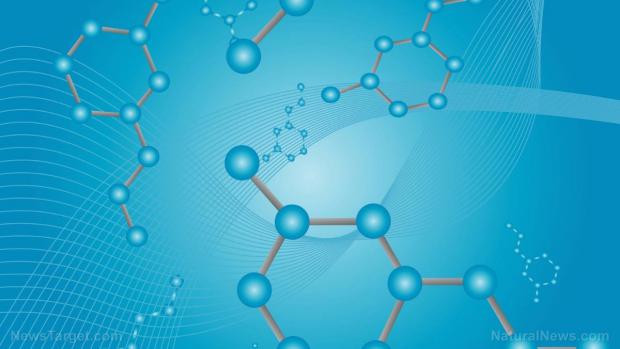
Breaking News
 They've Been Feeding You Poison (And Calling It Food)
They've Been Feeding You Poison (And Calling It Food)
 Tattoo ink may cause prolonged changes to the immune system
Tattoo ink may cause prolonged changes to the immune system
 Travel gadget promises to dry and iron your clothes – totally hands-free
Travel gadget promises to dry and iron your clothes – totally hands-free
 Duckweed: A sustainable, protein-packed food source smeared by Big Ag
Duckweed: A sustainable, protein-packed food source smeared by Big Ag
Top Tech News
 Perfect Aircrete, Kitchen Ingredients.
Perfect Aircrete, Kitchen Ingredients.
 Futuristic pixel-raising display lets you feel what's onscreen
Futuristic pixel-raising display lets you feel what's onscreen
 Cutting-Edge Facility Generates Pure Water and Hydrogen Fuel from Seawater for Mere Pennies
Cutting-Edge Facility Generates Pure Water and Hydrogen Fuel from Seawater for Mere Pennies
 This tiny dev board is packed with features for ambitious makers
This tiny dev board is packed with features for ambitious makers
 Scientists Discover Gel to Regrow Tooth Enamel
Scientists Discover Gel to Regrow Tooth Enamel
 Vitamin C and Dandelion Root Killing Cancer Cells -- as Former CDC Director Calls for COVID-19...
Vitamin C and Dandelion Root Killing Cancer Cells -- as Former CDC Director Calls for COVID-19...
 Galactic Brain: US firm plans space-based data centers, power grid to challenge China
Galactic Brain: US firm plans space-based data centers, power grid to challenge China
 A microbial cleanup for glyphosate just earned a patent. Here's why that matters
A microbial cleanup for glyphosate just earned a patent. Here's why that matters
 Japan Breaks Internet Speed Record with 5 Million Times Faster Data Transfer
Japan Breaks Internet Speed Record with 5 Million Times Faster Data Transfer
Researchers have designed a new solar device that may finally make hydrogen cars a reality

(Natural News) Researchers at the University of California, Los Angeles have crafted a device that can utilize solar energy to effectively and cheaply create and store energy, which could then be used to power electronic devices, and to harness hydrogen fuel for environmentally-friendly cars.
The device allows for inexpensive hydrogen vehicles because it can produce hydrogen using nickel, iron, and cobalt – elements that are much more abundant and less costly than platinum and other precious metals that are at present being used to manufacture hydrogen fuel.
"Hydrogen is a great fuel for vehicles: it is the cleanest fuel known, it's cheap, and it puts no pollutants into the air – just water. And this could dramatically lower the cost of hydrogen cars," Richard Kaner, UCLA distinguished professor of chemistry and biochemistry, and of materials science and engineering, who also happened to be the study's senior author, said.
The new tech, whose details have been explored at length in the journal Energy Storage Materials, can be of essential in help in rural areas, or to places that are particularly remote. "People need fuel to run their vehicles and electricity to run their devices. Now you can make both electricity and fuel with a single device," said Kaner.
The device can also pave the way for large cities to enable them to conserve surplus electricity from their electrical grids. "If you could convert electricity to hydrogen, you could store it indefinitely," added Kaner, who is also a member of UCLA's California NanoSystems Institute.
Conventional hydrogen fuel cells and supercapacitors have two electrodes: one positive and one negative. The device that was designed at UCLA has a third electrode that serves both as a supercapacitor, which stores energy, and as a device for splitting water into hydrogen and oxygen, process called water electrolysis.
All three electrodes are connected to a single solar cell that acts as the device's power source, and the electrical energy manufactured by the solar cell can be stored in one of two ways: electrochemically in the supercapacitor or chemically as hydrogen.
The device is a breakthrough because it creates hydrogen fuel in an eco-friendly way. Presently, around 95 percent of hydrogen production all over the world is derived from converting fossil fuels such as natural gas into hydrogen – a process that facilitates the release of large amounts of carbon dioxide into the air, said Maher El-Kady, a UCLA postdoctoral researcher and a co-author of the research.
"Hydrogen energy is not 'green' unless it is produced from renewable sources," he said, noting that making use of solar cells and abundantly available items to split water into hydrogen and oxygen has huge potential for lessening the cost of hydrogen manufacture and that the process could be used as substitute for the current method, which relies on fossil fuels.

 Advanced Propulsion Resources Part 1 of 2
Advanced Propulsion Resources Part 1 of 2

